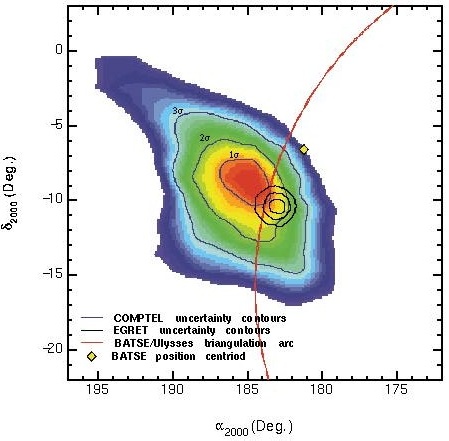| No other sources, however, match gamma-ray bursts for their
extraordinary behavior. For example, while millions of TV viewers watched
the Superbowl on January 31, 1993, the wavefront of a very intense gamma-ray
burst passed across the Earth and was detected by all four instruments
on Compton. This burst was briefly more than 1000 times brighter than the
rest of the gamma-ray sky. As seen by BATSE at low gamma-ray energies,
10 keV to a few MeV, the intense part of the burst consisted of a few short,
closely spaced pulses lasting only about one second. EGRET also detected
this initial phase of the burst, but quite unexpectedly, emission was seen
to persist almost one minute later at high gamma-ray energies, 100 MeV
to several GeV, where EGRET is most sensitive. |
This "Superbowl Burst" was also seen by a detector on the
Ulysses spacecraft, allowing the location to be refined well beyond the
positional uncertainty of most gamma-ray bursts. |
|
